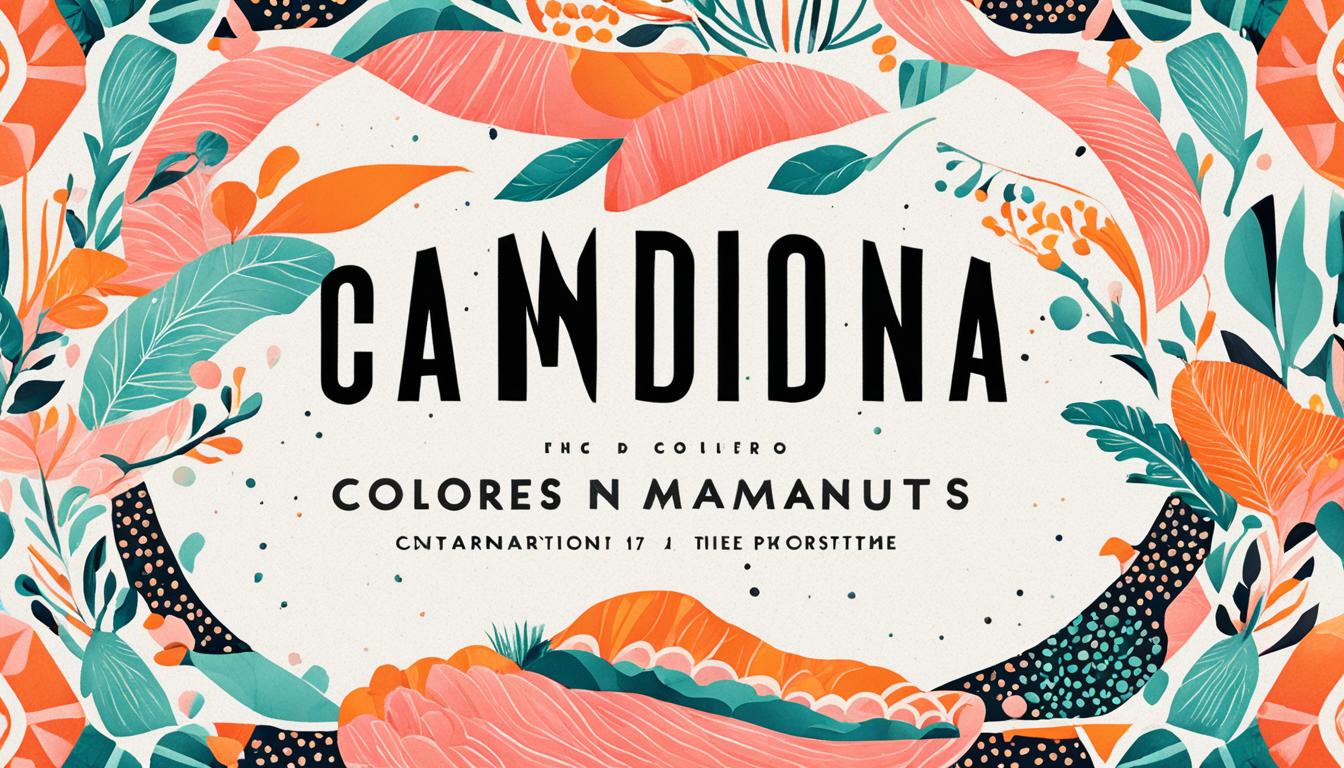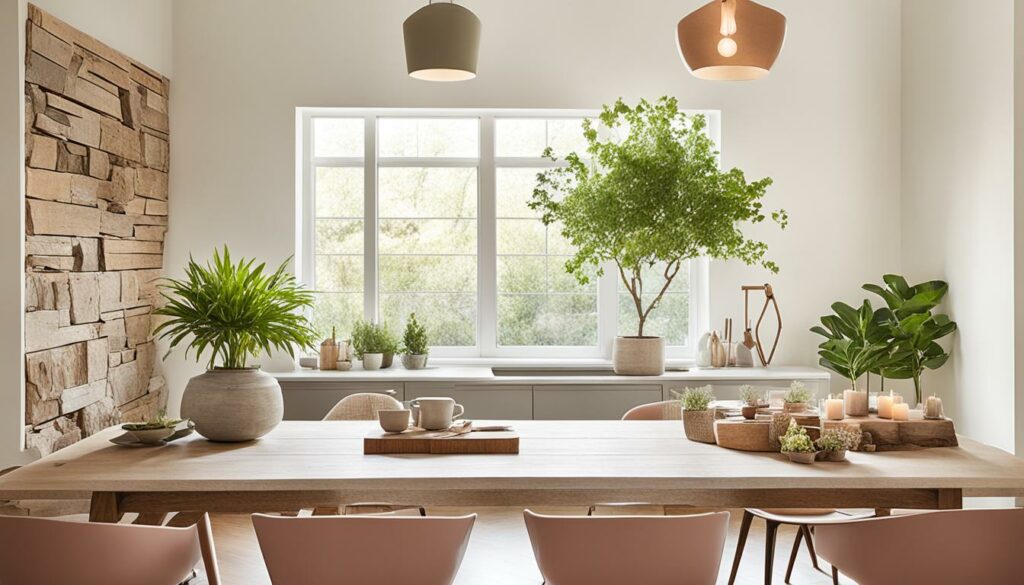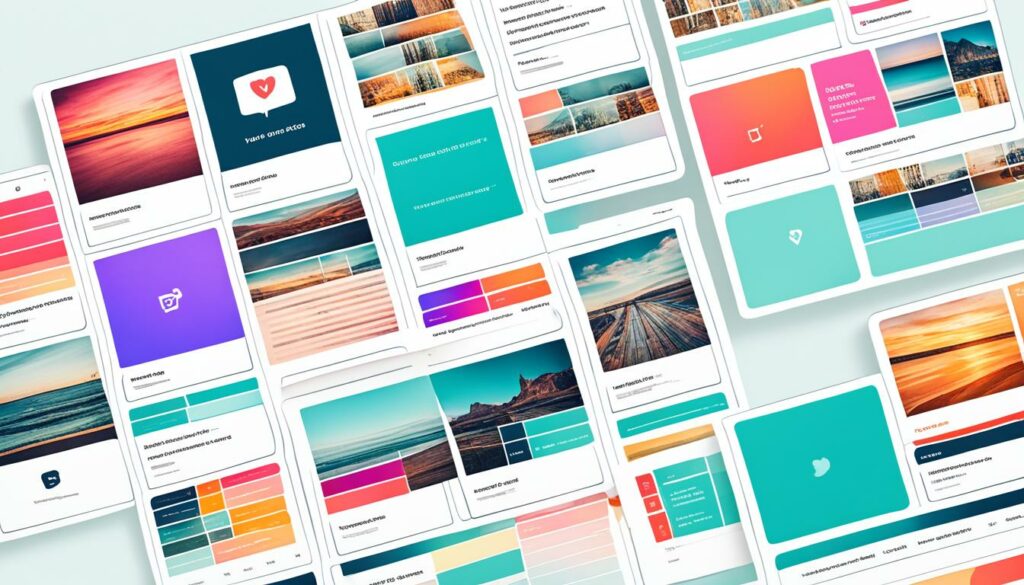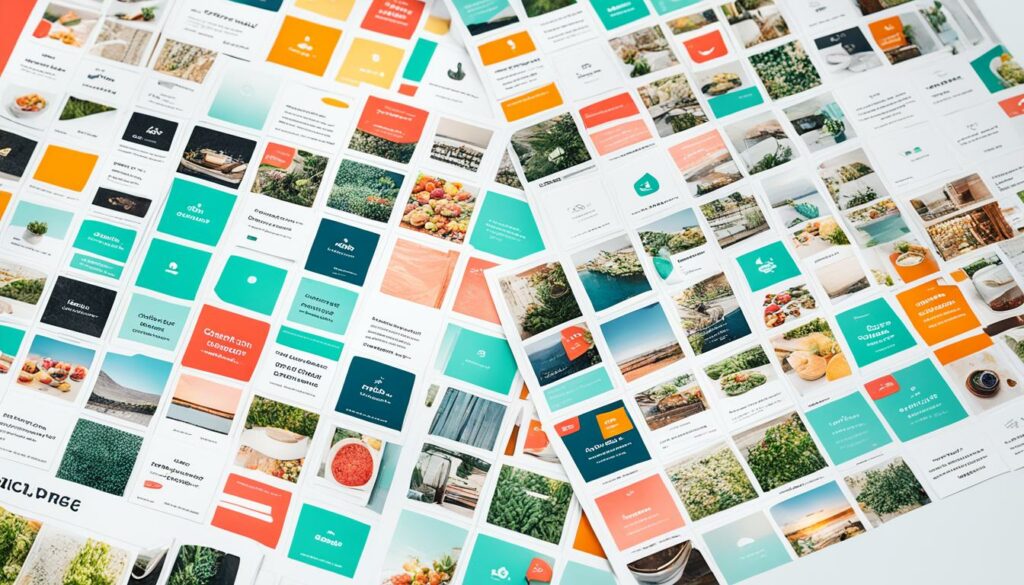Menu

Did you know that keeping your brand look the same on all platforms can make you 23% more money? This shows how important a cohesive social media aesthetic is today. It’s not just about having beautiful Instagram pages look similar. It’s also about showing what your brand cares about and its character on every platform.
Big brands like Coca-Cola, Apple, and Nike prove that a unified design strategy helps people remember your brand. They use the same colours, fonts, and images everywhere. This makes people recognise your content quickly, trust it more, and engage with it.
Having a clear look not only makes your brand more visible. It also makes creating content easier by using the same templates. This saves time and makes things run smoother. For instance, brands like Flying the Nest and Fenty Beauty excel on platforms like Instagram. They stand out and are easily remembered because of their strong visual identity.
For making your social media look unified, tools like Canva can be a huge help. They offer many templates and design features. Additionally, Unsplash has amazing stock images that are free to use. These tools together simplify creating content, making sure your look is always engaging and consistent everywhere.
A great social media look tells a story about a brand in a way that grabs people’s attention. This story is told through the colours, fonts, and pictures chosen. They all work together to make the brand stand out and stick in people’s minds.
Did you know, how things look on social media really matter? Nearly all shopping choices are influenced by how something looks. And most people like brands that look good, not ones that are boring.
Many of us learn best when we see things. That’s why having a strong look and feel on social media is key. It helps people remember and understand a brand better.
Keeping your brand’s look the same everywhere is super important. Brands that do this well are more likely to be remembered and liked by customers. They also build stronger bonds with them.
There are many tools to help keep your brand’s look consistent online. For example, Canva and Figma let teams work together easily on designs. Planning ahead with things like layout and colours also makes a big difference.
So, visual harmony in branding is more than just making things look nice. It’s how a brand talks to people without using words. This type of communication can really boost how people see and remember a brand.
| Statistic | Percentage | Relevance to Branding |
|---|---|---|
| Purchasing judgements based on visuals | 93% | Highlighting the impact of visual elements on customer decisions |
| Preference for appealing aesthetics | 82% | Underlining the importance of a visually appealing aesthetic |
| Consumers wanting to relate to a brand | 78% | Emphasising the need for a relatable social media presence |
| Expecting a seamless experience | 87% | Pointing to the necessity of consistent visuals across platforms |
Having a consistent look on social media is key. It attracts eyes and builds a stronger connection with your audience. A well-thought-out branding online makes your business stay in people’s minds.
A strong brand look means people easily recognise you. Using the same colours, fonts, and images everywhere makes your brand standout. This consistent style makes people remember you better, boosting your brand’s visibility and memorability.

Looking polished online invites people in. When your social media is consistent, it feels organised. This not only makes people feel comfortable but also makes them more likely to interact with your content. Furthermore, studies show that a cohesive look can boost sales significantly.
A consistent look can win people over and make them trust you. It helps create a good first impression and keeps them engaged. Strong branding shows your brand’s true self. It sparks emotions that lead to loyalty and trust with your audience.
Different types of social media aesthetics play a vital role in enhancing visual consistency. Whether it is the Minimalist approach often adopted by tech companies, or the Rustic aesthetic favoured by home decor brands, choosing an appropriate style is crucial.
| Industry | Common Aesthetic |
|---|---|
| Tech Companies | Minimalist / Modern |
| Fashion Labels | Elegant / Luxurious |
| Travel & Lifestyle | Free-spirited / Bohemian |
| Home Decor | Rustic / Cozy |
Creating a strong social media look starts by knowing your brand’s core. It’s not just about pretty pictures. Your brand’s look carries its heart and soul. This identity journey has important steps. Each needs deep thought and understanding.
First, you need to know what your brand believes in. Pinning down these main values helps in creating an attractive social media look. They should shine through everything you post. Take Patagonia for example. Its eco-friendly drive is clear in what they say and show, showing their values every day.
It’s vital to know who you’re talking to for an eye-catching look. Different people like different things. Younger folks might prefer bold and bright colours, while older age groups might lean towards minimalist themes. Knowing this helps you meet their style needs.
Have a clear picture of what you want to do with your social media. Is it to be more well-known, build connections, or sell more? Knowing your goals makes sure everything from your look to your posts helps achieve them. Apple is a great case. Their sleek look backs up their aim of being innovative and top-notch.
| Social Media Aesthetic Type | Ideal For |
|---|---|
| Minimalist / Simplistic | Luxury brands, tech companies, fashion labels |
| Free-spirited / Bohemian | Travel, lifestyle brands, adventurous influencers |
| Rustic / Cozy | Home decor, food and beverage, outdoor recreation |
| Bold / Bright | Youth-oriented brands, fashion and beauty labels |
| Monochromatic | Contemporary art and design brands |
| Modern / Sleek | Tech companies, finance firms, architectural firms |
| Traditional | Luxury goods, fine dining restaurants |
| Luxurious | High-end fashion, jewelry, beauty brands |
| Utilitarian / Functional | Industrial, manufacturing, tech brands |
| Classic / Elegant | Conservative brands, photographers |
| Whimsical / Charming | Children-centric, creative industries |
Knowing these parts helps show your brand’s character. It also helps create a social media look that people really connect with.
Picking your colour palette well is key to a strong social media look. Around 92% of companies use social media for marketing. A good colour set can really boost your brand’s online impact.

The way your brand’s colours make people feel is very important. Each colour tells a different story. Like, red can show urgency and thrill. Blue might mean trust and being serious. And green often stands for health and the natural world. Adding these ideas to your social media look can change how people see your brand.
Making sure your colours match your brand’s heart is vital. Almost 59% of shoppers online say they remember brands by their colours. Tiffany & Company, for example, is known right away because of ‘Tiffany Blue’. Using the same colours builds your brand’s character and links better with your audience.
Creating a good colour set is not hard with the right help. Sites like Coolors can make choosing colours easy, based on your brand’s colours or from ready-made suggestions. Such tools help keep your brand looking good on any social site. Keeping your brand’s look the same can increase your earnings by up to 23%. This shows how good design can help your business.
| Colour | Associated Emotion | Example Brand |
|---|---|---|
| Red | Urgency, Excitement | Coca-Cola |
| Blue | Trust, Professionalism | |
| Green | Health, Nature | Whole Foods |
| Yellow | Optimism, Warmth | McDonald’s |
| Purple | Loyalty, Luxury | Cadbury |
Picking the right colours and matching them with your brand’s values is key for a look that really connects with people on social media.
Choosing the right fonts and typography is vital for creating a strong social media look. The font style you use can deeply affect how people see your brand. It shapes your brand’s voice and identity.
Fonts can make people feel different things and see your brand in unique ways. Serif fonts might make your brand feel classic and dependable. This is great for brands aiming for a high-end, refined image. Sans-serif fonts are more minimal and clean. They work well for brands seeking a modern, straightforward look. It’s crucial to pick a font style that reflects what your brand is about.
It’s key to ensure that your font choices are easy to read on social media. Don’t choose fonts just because they look nice. They need to be clear on any screen. Also, using various font sizes and weights can help emphasise important points. Make sure your fonts are the same all the time. This keeps your content clear and uniform.
Using the same fonts everywhere is big for your brand’s online look. When people see these fonts, they should think of your brand. Brands like 9Round are good examples of this. They have a font that everyone recognises. If you stick to a set of fonts, you make your brand stand out and look well put together.
Choosing the right images and graphics is key for a strong social media look. It helps the brand stand out and be remembered by everyone. Picking the best images is vital for the brand’s success.

Picking images that match the brand’s values is essential. They need to connect with the people who follow the brand. If the images are consistent, people are 25% more likely to recognise the brand. For example, luxury brands use fancy looks to attract rich customers.
Graphics should fit the brand’s story well. They make everything look better and help pass the brand’s message. Tech brands like a simple look, which is clean but not very fancy. Creative businesses, however, often choose fun and quirky pictures, which young people like a lot.
Keeping the same look across all social media is very important. It makes the brand look as one and makes people remember it better. A clear and unified style wins the trust of consumers. Bright images, for example, make youth brands instantly noticeable.
Looking carefully at images and graphics helps a brand create a strong online presence. This way, more people notice and like the brand. It makes the brand’s online look smooth and memorable. Both old and new customers will be drawn to it.
The journey to a great social media look starts with a mood board. This tool helps see and shape what your brand is all about. It makes creativity smoother, so every social media spot looks the same. This gives a clear brand image.
To kick off a mood board, first, I find inspiration. Stuff like photos, graphics, textures, and colour palettes set the mood. Using sites like Pinterest, Dribbble, and Canva lets brands gather a mix of visuals. This makes for a strong and recognisable brand image, as shown by profiles like Emma Hill and Fenty Beauty.
After collecting visuals, they need to be well-organised. This step is key for making sure everything fits the brand. The mood board’s look and feel must be united. Here’s what we need to think about:
Digital tools are a must-have for mood boarding. With sites like Pinterest and Canva, brands can test different looks. Mood boards help teams stay on the same page from planning to posting. They make sure every campaign looks and feels like your brand.
A mood board makes your brand’s style clear. It helps marketers make things that people really like. Since all businesses see the value in a good social look, this step is super important.
| Brands | Tools Used |
|---|---|
| Emma Hill | |
| Flying the Nest | Dribbble |
| Fenty Beauty | Canva |
Social media content templates are key for brands. They help keep the look the same everywhere. This makes the process of creating branded content easier. All posts then fit the brand’s design rules.
Nearly all businesses, about 92%, use social media for marketing. This makes the need for consistent content more important than ever. Good templates let brands quickly make posts that look similar. This helps people easily spot the brand online.

Using social media content templates can also boost sales. Keeping your brand’s look steady across platforms might raise sales by 23%. This shows why it’s vital to have a strong brand style.
Big brands like Coca-Cola, Apple, and Nike shine because of their branding. They use the same design ideas in their social media content. This not only makes them well known but also wins customers’ trust.
Tools like Canva are great for making good content. They offer lots of fonts, graphics, and templates. Plus, sites like Unsplash give free stock images for any use. This helps brands make content that looks great and stays on brand.
So, including social media content templates in your plans is smart. They help keep your brand’s look the same, no matter where people see it online. This can boost how much people engage with your brand and how much money you make.
The digital age has brought a new way for brands to keep a cool social media look. They use many design tools made for people who are not designers. These tools are easy to use and packed with features. They help create a strong brand look everywhere.
Tools like Canva have changed the game for those not trained in design. Canva has lots of fonts, graphics, colours, and ready-to-use designs. This makes it simple to make your social media look just right. Unsplash provides free stock images, great for adding visual quality to any brand.
One big plus of using design tools is the ready-to-use templates. These templates can be made unique to your brand. Canva lets you add your brand’s colours and fonts to keep everything looking the same. It’s also handy to use tools like Linktree to put all your important links in one place, making it easier for your followers.
Staying popular on social media means keeping up with what’s new. Planning tools like Planoly and Plann can help make sure your posts look good together. It’s important to know what people like and to update your style often. This keeps your brand’s look fresh and interesting for your followers.
Here’s a quick comparison of the tools discussed:
| Tool | Features | Ideal For |
|---|---|---|
| Canva | Range of fonts, graphics, colours, templates | Non-designers, customisation |
| Unsplash | Free stock images | Visual content enrichment |
| Linktree | Multiple links in one URL | Audience navigation |
| Planoly & Plann | Visual post organisation | Trend alignment |
In the world of social media, how you edit content is key. Having a regular way of editing photos, videos, or using filters is very important. It helps keep your brand’s look the same. This way, people can easily recognise your brand.

Creating a consistent social media strategy means more than just making posts. Each platform has its own challenges and needs. Using the same editing style on all of them makes your brand look smooth and unified.
Tools like presets and LUTs are great for this. They keep all your images and videos looking the same. With a set of filters, every post matches your brand’s style. You can find these tools on sites like Etsy and Creative Market.
But, it’s not just about filters. It’s also about using the same colours and fonts. Having a certain set of colours and fonts helps your brand stand out. It makes your content easily recognisable. This is another way to follow a clear social media plan.
Planning apps like Later and Plann can be a big help too. For example, Later’s Visual Planner lets you see how your Instagram feed will look. It ensures everything fits your brand’s style.
Remember, digital media is always changing. Update your brand’s colours once a year. This keeps your social media fresh and on-trend. It also shows your brand is growing.
Creating a content calendar is key to a smooth content schedule. It helps ensure your social media plan is effective and matches your brand’s aims. A good calendar lets you plan when and how you release content. This keeps your audience engaged and ensures your look is the same everywhere.
Planning in advance is vital for social media success. It lets you keep your content fresh, fitting in with your marketing goals. By staying organised, you make the most of special events or promotions. This brings more people to engage with your content and keeps your image true to your brand.
Nearly 92% of businesses use social media. So, making sure you’re consistent on all platforms matters a lot. Using the same looks and messages on all your platforms makes your brand stronger. It can help people trust and recognise your brand more. Plus, it could increase how much money you make by 23%.
Having the right tools is a big help in content planning. Things like Hootsuite, Buffer, and CoSchedule make it easier to work together, set a schedule, and keep track of your posts. They come with helpful features like viewing your schedule, dividing tasks, and checking how well your content is doing.
Consider the following popular tools:
| Tool | Features | Best For |
|---|---|---|
| Hootsuite | Scheduling, Analytics, Multi-account Management | Large Teams, Detailed Analytics |
| Buffer | Easy Scheduling, Social Media Insights, Team Collaboration | Small to Medium-sized Businesses |
| CoSchedule | Comprehensive Calendar, Content Organisation, Project Management | Marketing Teams, Campaign Management |
To improve our look on social media, we must check out what others are doing. By looking at competitor aesthetic analysis, I learn what’s great in our field. This info helps us create a better visual plan. We look at things like colours, font styles, and pictures that catch people’s eyes.

Take Drive Social Media, for example. They’ve nailed their look. Their high-quality images and videos really stand out. Using pro photos helps them look even better, which pulls in more people.
Big names like Hulu and Balmain are using AI to up their game. With tools like Buffer and Sprout Social, they are posting smarter. This approach is key to keeping up with the best in our business.
Studying our rivals points out what makes us special. Showing our local tales and landmarks can really connect with our crowd. Spotting these unique points is key. It helps us be noticed while keeping our look top-notch.
In today’s fast-changing digital world, updating social media design is vital. Brands must keep up with the newest trends to stay interesting. With so many posts every second, you need to make yours look good to grab people’s attention. This means you should always check and tweak your brand’s style to stay current and liked.
Choosing the right colours is key on social media. Warm colours like red and orange bring excitement, while blues and greens are more calming. Each colour also has its own meaning. For example, yellow is all about joy, but black shows a touch of class. Use tools like Canva and Sketch to work together on design, keeping your look consistent.
Looking at what others are doing is also important. In the US, there are thousands of marketing firms. To stand out, your designs must be unique and eye-catching. Notion is good for managing projects and getting feedback. It helps make sure your updates are on point.
Keeping your social media lively is key to keeping fans engaged. Platforms like MixBloom can help you do this. They offer a wide range of services for brands wanting to grow their online presence.
To wrap up, checking and improving your brand’s design regularly is more than good practice. It’s essential for staying fresh and connecting with your audience. This way, you keep up with the changing world and remain appealing.
Crafting a cohesive social media aesthetic strategy is key for any brand’s digital plan. It involves carefully choosing brand identity features. This includes things like colours, fonts, pictures, and how to plan what you share. Consistent visuals help a brand stand out and make more people pay attention. They also help to gain trust and keep people interested. This professionalism is especially important for businesses online.
Keeping the same look across different platforms can be hard and take a lot of time. Aesthetic trends can change fast, and too much focus on looks might mean less attention to your actual content. But, the work you put in will pay off. A clear and consistent look can make your brand more engaging. It helps people remember and connect with you based on what you stand for and your style.
The key to making a visual strategy work is finding the right mix of what looks good and what you share. Sometimes, not all your content will match perfectly, and that’s okay. It’s good to be open to new ideas while still keeping things together. Revisiting and updating your look makes sure your brand on social media stays fresh and effective, leading to ongoing success in social media branding.
A cohesive social media aesthetic shows your brand’s look and feel. It uses similar colours, fonts, and images. This approach makes your social media look consistent and recognisable.
A consistent look builds brand recognition and trust. It helps your social media feel visually complete. This, in turn, makes a strong first impression and keeps customers coming back.
Start by knowing what your brand stands for and who you’re trying to reach. Think about the message and the feelings you want to share. This will help your social media presence connect with others.
Colours show your brand’s character and can affect how people feel. Using the same set of colours everywhere helps your brand seem solid and coherent.
The fonts you use are key for readability and brand recognition. Using the same ones across platforms keeps your brand’s voice clear. This also makes your content unmistakeable.
Canva and Milanote are great for making mood boards. They let you gather visuals and ideas in one spot. This is vital for fine-tuning your brand’s visual style.
Templates make it easier to make content that looks the same. They save time while keeping your brand’s look uniform. This means all your posts will look like they belong to the same family.
Many non-designers love Canva and Adobe Spark. They provide easy-to-use designs and good options. This way, you can keep your look together without needing design skills.
Choose a clear style for editing your photos and videos. This keeps your brand’s look strong and trustworthy. It’s key for looking professional on social media.
A content calendar helps you plan and stick to your look on social media. It makes sure you post regularly and keep your audience interested. It also lines up your posts with your brand’s big moments.
Looking at what others are doing helps you see what works and what doesn’t. It can inspire you to make your brand’s look more unique. This way, you can catch people’s eye with your social media style.
You should check and refresh your look regularly. This keeps your brand’s social media up to date. Always think about what’s changing and what your followers like to see. This ensures your social media stays engaging.